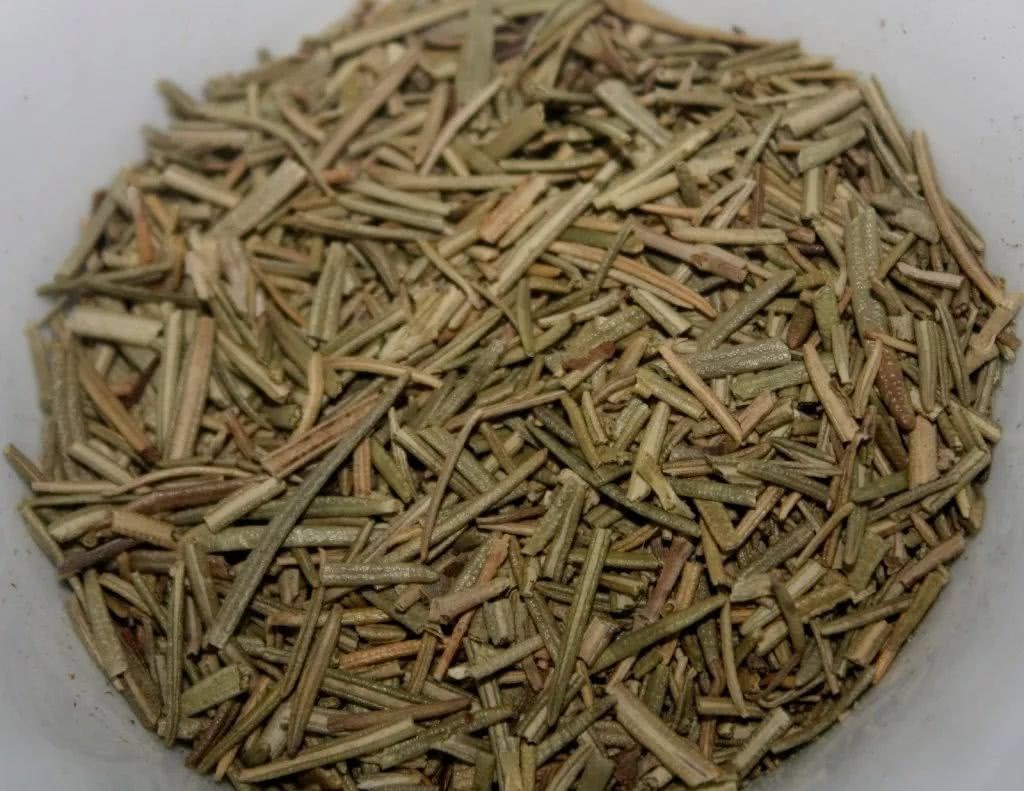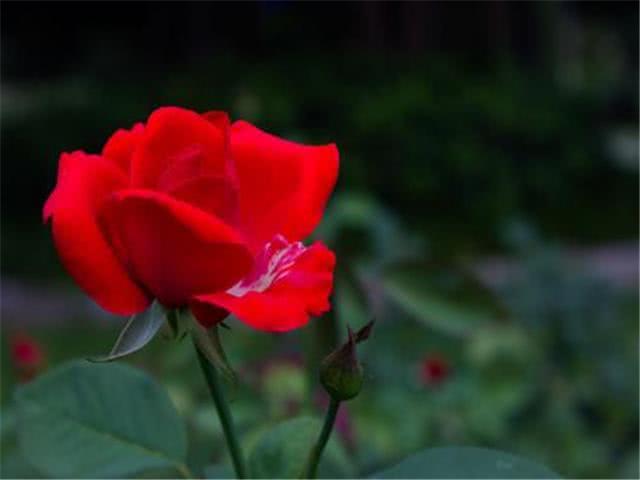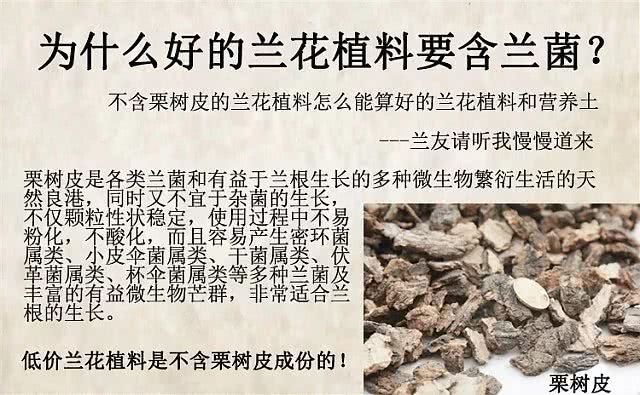Vanilla, Plague and War

At the beginning of the year, my friend gave me a bag of withered grass and solemnly introduced me: "This is the legendary rosemary." Match-stem-like branches installed in the black gauze bag, quickly smell, it turned out that this is the song of Zhou Dong: "Your smile fluttering in the wind, there is the smell of rosemary." The first time I heard "Rosemary" was because of this song. The friend added that rosemary in Scarborough Fair, an episode of The Graduate, was this rosemary:
Are you going to Scarborough Fair
Are you going to Scarborough Fair?
Parsley, sage, rosemary, and thyme
Parsley, sage, rosemary, thyme
Although dry, close to smell the aroma is still obvious, cool and slightly spicy. It should taste the same as it did at Scarborough Fair hundreds of years ago.
[9]By Atudu, via Wikimedia Commons
1 Dimension of vanilla
Rosemary is a famous spice plant under Labiatae. Labiatae can be said to be a big spice. In addition to parsley, the other three spices in this lyric are all labiatae. Rosemary is a shrub that grows up to 2 meters tall. Its English name rosemary comes from the Latin scientific name Rosmarinus officinalis Linn. The Latin ros means dew, and marinus means sea, so rosemary literally means "dew of the sea."
Rosemary is native to Europe and the Mediterranean coast of North Africa, so the name has sea. Another expression is related to the Virgin Mary, rosemary is interpreted as Rose of Mary. Sea breezes bring seagulls, sailboats and rosemary from ships, which are dusted with dew and will appear at the market and then at people's tables.
Rosemary stems, leaves and flowers are rich in aroma, can be used to extract aromatic oil, modulation perfume. In the Mediterranean region, fresh or dried rosemary is a common seasoning and natural preservative in the kitchen. Its fresh and unique flavor can be used with many foods, especially barbecue.
[10]By cyclonebill , via Wikipedia Commons
As a commonly used spice, rosemary has a long and rich meaning in western culture. In ancient Egypt, rosemary was considered a sacred object that could be preserved. Christmas in the West, people will be more in the church and home columns or doors decorated with rosemary. In the Middle Ages, rosemary often appeared in weddings, the bride would wear a rosemary woven headdress, the groom and guests would also wear one, so rosemary also symbolizes faithful love. It also stands for "memory and remembrance." In Europe and Australia, the plant is used for war anniversaries and funerals, and mourners throw rosemary into graves to express their grief. [1]This ritual may have something to do with rosemary's antiseptic properties. In Act IV, Scene V of Hamlet, the mad Ophelia has a passage about many plants. The first sentence is about rosemary:
There"s rosemary, that"s for remembrance;
pray, love, remember.
Translated:
There's "rosemary" over there, which is conservative memory;
Dear, please don't forget me. [2]
The first time I heard the name Rosemary, I thought it was very foreign. It turned out that rosemary was introduced into China through the Silk Road as early as the Wei and Jin Dynasties. Wei history book "Wei Lue" contains "Great Qin out of the maze", Great Qin is the Roman Empire and the Near East region. Guo Yigong of Jin Dynasty wrote Guangzhi on natural history,"Lost in the West Sea," which may refer to the Mediterranean Sea. [3]After rosemary was introduced into the Central Plains, Emperor Wen of Wei favored this kind of plant, which "emits fragrance and has fragrance". He wrote "Rosemary Ode" with Cao Zhi and Wang Can, Chen Lin and Ying [yáng] among the seven sons of Jian 'an. The words were gorgeous and generous. Cao Zhi explains the origin of the Chinese name Rosemary in his preface:
And the earth is like a cloud, and the earth is like a cloud. After winter, flowers begin to bloom; they bloom and die, and they grow into pearls, each like a fire. [5]The fragrance of Pei is immersed in the body, and those who smell it are infatuated and cannot go away, so it is called rosemary. (Cao Zijian Collection, Volume 3)
As Cao Zhi describes it, rosemary "permeates the body with its fragrance," an herb that did not enter the kitchen after it was introduced to China but was used for incense, mosquito repellent and evil spirits. The ancients did use exotic spices very delicately, perhaps because rosemary was somewhat unique and did not seem to fit well on the table. Tang Dynasty Chen Zangqi "Herbal Shiyi" in the main effect of rosemary is: "evil, make people clothes fragrant, burn it to go ghost." To the Ming Dynasty, Li Shizhen also only added one: "He notopterygium (qiāng huó, an umbelliferae traditional Chinese medicine) for pills, burn it, avoid mosquitoes." [6]
[11]Rosemary Seeds By Roger Culos, via Wikimedia Commons
2 Scarborough Fair
Rosemary symbolizes love, memory and remembrance, which is helpful to understand Scarborough Fair. This internationally acclaimed interlude from American singer Paul Simon is based on an old British ballad, a love song:
Are you going to Scarborough Fair?
Are you going to Scarborough fair?
Parsley, sage, rosemary, and thyme;
Parsley, sage, rosemary, thyme;
Remember me to the one who lives there,
Please tell the people who live there that
For once she was a true love of mine.
She was my true love.
Scarborough is a small coastal town in England, located on the northeast coast of Yorkshire. On January 22, 1253, King Henry III of England signed a royal charter allowing the town of Scarborough to hold a fair from August 15 to September 29 each year. In time, the town became an international trading port, attracting merchants from all over England, continental Europe, Norway, Denmark, the Baltic States and the Ottoman Empire. Due to competition from other trading ports and requests from local citizens, the Scarborough Fair was suspended in 1256, gradually declined, and finally closed in 1788. [7]
Scarborough Bay, 19th century.[7]
Judging from the lyrics,"celery, sage, rosemary, thyme" would have been common goods at Scarborough Fair at the time. The origin of this ballad is unknown, and by the end of the eighteenth century it had been adapted into more than twenty versions. Although there are many versions, the general idea is basically the same: let these four herbs send a message to the lover, let the lover do something for each other:
Tell her to make me a cambric shirt,
Please let her make me a linen dress
Without any seam or needlework,
No seams, no stitches.
In duets, the woman also makes demands on the man:
Tell him to buy me an acre of land,
Ask him to find me an acre of land
Between the salt water and the sea sand,
Between the sea and the beach
After that, they can become lovers of each other. Obviously, these tasks are impossible, so this is another desperate love song. From the lyrics and the time of circulation, it is speculated that this song is related to the Black Death, which was prevalent in Europe at that time.
The Black Death, known as plague, ravaged Europe many times, killing countless people and being one of the most destructive plagues in human history. The death toll from this plague peaked between 1347 and 1351, when trade at Scarborough Fair must have been affected. Imagine that the hero of this ballad might very well be the merchant at Scarborough Fair, who unfortunately died of plague and never saw his beloved girl again. So he asked parsley, sage, rosemary and thyme to speak for him. The girl he loved had bought parsley, sage, rosemary and thyme from him.
Rosemary played a role in plague epidemics. Hospitals and churches burned large quantities of aromatic plants, including rosemary, to ward off disease, and English thieves later invented a pestilence-fighting potion called Vinegar of Four Thieves, one of the ingredients of which was rosemary. Therefore, the word "rosemary" in the lyrics, on the one hand, conveys feelings, on the other hand, saves lives, and seems to contain the meaning of "antidote". Rosemary symbolizes love, I wonder if it has anything to do with this love song. That's just speculation.
This ballad has a beautiful melody and a moving story, which is sung repeatedly by people. It wasn't until 1965, when Paul Simon traveled to England, that he was similarly impressed, perhaps at the moment he heard the song. In the same year, President Johnson authorized Operation Rolling Thunder to conduct large-scale bombing of North Vietnam, and 3500 U.S. Marines landed in Da Nang, Vietnam. The Vietnam War officially broke out. At the same time, anti-war voices grew in the United States. It was against this background that Paul Simon decided to adapt it, collaborating with Art Garfunkel to include in the ballad his 1963 composition The Side of a Hill:
on the side of a hill a sprinkling of leaves
A few red leaves were scattered beside the mountain
washes the grave with silvery tears
Silver tears wash the grave
a soldier cleans and polishes a gun
A soldier polishing his gun
war bellows blazing in scarlet battalions
The sound of war burns in the bloody barracks
generals order their soldiers to kill
The general gave the soldiers the order to go to war
and to fight for a cause they"ve long ago forgotten
For a long forgotten reason
Folk songs became anti-war songs, and this time it was not the plague that killed lovers, but a war more cruel than the plague. The Vietnam War lasted from 1955 to 1975, with heavy casualties on both sides. "On the battlefield where there is no justice, young people rush to death and never return to their beloved's side." [8]
Rosemary planted outdoors in East China
As mentioned earlier, rosemary often appears at funeral ceremonies in the West, where rosemary is thrown into the grave of the deceased as a memorial; rosemary later appears on war anniversaries. So Paul Simon cleverly added the ballad "Scarborough Fair" to the antiwar song, where "rosemary" corresponds to "war" and "death." The album is titled Parsley, Sage, Rosemary and Thyme.
It naturally reminds people of "White Birch Forest," which originated from Ukraine and tells the story of a small Soviet soldier during the Second Station: the war was won, but the girl under the white birch forest could no longer wait for his lover. "Who will prove the love and life of those who have no tombstone?" Birch forest, like rosemary, plants place heavy human feelings.
[1] https://en.wikipedia.org/wiki/Rosemary
[2]William Shakespeare, Hamlet, China Radio and Television Press, 2001, p. 226.
[3]"Wei Lue,""Guang Zhi" has been lost, see "Taiping Yu Lan."
[4]Cao Zhi said that rosemary originated from Western Shu, and Cao Pi also mentioned in Rosemary Fu that "the filth of thin Western Yi is vulgar, and it comes from thousands of miles". Western Shu and Western Yi should refer to western Sichuan, which seems to be inconsistent with the records in Wei Lue.
[5]"Fire Qi" is "like mica, color such as purple" general jade. See the book? All the barbarians? Middle India. Here Cao Zhi compares the fruit of rosemary to jade.
[6]"Materia Medica Supplement" has been lost, see Compendium of Materia Medica. The 14th edition.
[8]Winter Solitude: Weekend Nostalgia | Scarborough Fair baijiahao.baidu.com/s? id=1567488164643372&wfr=spider&for=pc
[9]By Roger Culos ,via Wikimedia Commons,CC BY-SA 3.0 https://commons.wikimedia.org/w/index.php? curid=31984559
[10]By cyclonebill , via Wikimedia Commons,CC BY-SA 2.0 https://creativecommons.org/licenses/by-sa/2.0
[11]By Roger Culos ,via Wikimedia Commons,CC BY-SA 3.0 https://commons.wikimedia.org/w/index.php? curid=31984559
About the author: Jianghan Tang Tang, enterprise employee/art museum public education volunteer/freelance writer, now living in Beijing.
Graphic Editor: Jiang
This work is licensed under the (CC BY-NC-ND 4.0) License.
Please keep the above statement
iPhone users can reward the author through the QR code below
- Prev

How to water the potted rose? How to judge whether it is short of water
How to water the potted rose? How to judge whether it is short of water Abstract: rose has always been loved by people, whether it is potted or cultivated in the courtyard is very suitable, but can you really raise rose?
- Next

Orchid plant nutrition soil pine chestnut king bark particle matrix plant species Chunhui Jianmu orchid special general mixed type
Many orchids have dug orchids or picked orchids in the mountains, and you will find that lush orchids grow in mountain forests with thick substrates, loose pines, fertile pine trees and chestnut trees. So what is this matrix? This matrix is some pine bark, pine.
Related
- Wuhan Hospital Iron Tree Blooming Result Was Instantly Frightened by the Gardener Master
- Which variety of camellia is the most fragrant and best? Which one do you like best?
- What is the small blue coat, the breeding methods and matters needing attention of the succulent plant
- Dormancy time and maintenance management of succulent plants during dormancy
- Minas succulent how to raise, Minas succulent plant pictures
- What are the varieties of winter succulent plants
- How to raise succulent plants in twelve rolls? let's take a look at some experience of breeding twelve rolls.
- Attention should be paid to water control for succulent plants during dormant period (winter and summer)
- Watering experience of twelve rolls of succulent plants
- Techniques for fertilizing succulent plants. An article will let you know how to fertilize succulent plants.

